01 October 2019
Oh yes, and I’ve been writing again. A combination of a personal experience and then discovering a most interesting article in a recent German Journal, has resulted in another “ah ha” moment for me and for point and med-testers everywhere.
When testing your patients, do you get them to remove their watch, rings, cell phone and so on? Ever asked about their hearing aids? Modern digital hearing aids are truly phenomenal for those of us who are hearing impaired, but is it really okay to have all that amazing clarity through Bluetooth technology traveling from one ear to the other every day for upwards of 18 hours?
Here’s an interesting article I found in one of my journals as I step back into translating and writing for P2P.
s/Carolyn
Environmental Medicine
Hearing Aids and
Their Electromagnetic Radiation
Cell Biological Examinations Provide
Evidence of Cell Vitality Losses
The term “hearing reduction” is described as a decrease of hearing ability. The extent can be exactly determined with different methods of audiometry. A simplistic and everyday common classification differentiates between minor, medium and high-grade hearing losses, up to total hearing loss or deafness. Hearing reduction can have quite different causes, like for example strong or long-time sound effects, injuries, poisoning, infectious illnesses, heredity – or can also appear with numerous syndromes. A hearing reduction is often accompanied by other symptoms such as Tinnitus, noise sensitivity or dizziness.
Obviously, musicians are particularly affected, since a study in 2016 among musicians from one of the largest classical orchestras in Norway has proven that almost half of the musicians had a hearing loss and more than three-quarters of the musicians experienced Tinnitus in various frequencies. Nevertheless, many prominent artists from the current Pop and Rock scene are also affected.
In the history of mankind probably the first hearing help consisted of laying the hand behind the ear and thus leading the sound waves bundled into the auditory canal. By the end of the 18th Century people used an acoustic horn with a flexible tube which was placed into the ear.
In 1895 the New York engineer Miller Reese Hutchinson developed the first electrical hearing aid, consisting of a large battery housing with a telephone-like receiver that was held to the ear. To this day the basic principle is still the same: a microphone takes up the acoustic signals from the environment and converts these into an electrical alternating signal. In the processor the electrical signal is strengthened and delivered by the loudspeaker again as an acoustic signal into the ear of the hearing aid wearer.
Type and Functionality of Modern Hearing Aids
Today’s hearing aids have developed into mini-computers. In principle, they are differentiated between two hearing aid designs: the behind-the-ear devices and the in-the-ear devices. Nevertheless, regardless of the design all devices have one thing in common, they contain an extremely efficient miniature chip.
Both designs can be equipped according to the needs of the wearer with different technologically specific features. Additionally, part of it is for example the range of signal processing, or also a complex interference suppression by which the interference sounds are distinguished from speech and are reduced. The microphones, up to three pieces according to the design, are aimed to the speaker. Music lovers take pleasure in specialized programs. Different hearing aids can be wirelessly connected to the television, telephone, Smartphone or other accessories. Moreover, in the premium segment [designs], the wearer has the possibility to optimize the sound reproduction of his hearing aids himself by means of a self-learning mode through a corresponding app on his Smartphone
All this sounds fantastic and revolutionary and above all also offers the wearer understanding in a noisy environment, a great practical advantage. But how does such a thing function? How can microphones align themselves automatically to a speaker? Simply, this is only possible by means of a permanent data exchange between both hearing aids. In fractions of a second all values are constantly adjusted, and if for instance it is noticeable that for example speech on the right side becomes louder (more interesting) the microphone on the right side automatically aligns itself to the speaker. At the same moment the left device reduces the amplification so that the so-called background noises are transferred more quietly.
With many manufacturers this permanent data interchange, as well as the wireless binding occurs by external devices, by Bluetooth (2.40 GHz) through the head and often for 12-16 hours daily. Nevertheless, the previously described advantages are put into perspective for some people. They report among other things about “head pressure” or a “dim feeling”, which appeared ever since they wore the hearing aids. Sensitive people seem to perceive this permanent technical data flow.
However, it is still a possibility to improve hearing capability with the behind-the-ear hearing aids from the basic segment [designs] or the smallest, most invisible in-the-ear hearing aids which have no so-called wireless functions.
Effects of Electromagnetic Radiation Examined
Based on the earlier cell biological investigations on the effect of radiation from DECT (Digitally Enhanced Cordless Telecommunications) telephones, mobile phones and routers [1-4], we were interested in the current studies, whether the very low electromagnetic radiation from modern digital hearing aids which constantly communicate with one another on different frequencies could also have an effect on a cellular level. According to our knowledge up to now, such investigations with cultured cells have not yet been carried out with hearing aids.
Measurement of the Radiation Behavior of Hearing Aids
Because most manufacturers work with a frequency between 2.40 GHz and 2.48 GHz (W-LAN), the measurement arrangement for the cell exposure was measured in detail with evaluated measurement devices for their frequency range. In the experimental setup, the left hearing aid was positioned directly on the cell culture dish and the right hearing aid directly below the cell culture dish. Below the cell culture dish was a separator of cardboard with the hearing aid in the middle (Figure 1, next page). The EMF (Electro-Magnetic Field) high frequency measurement occurred without cell cultures, in order to exclude an influence from the biological material itself. Measuring devices were used in their position which could register the characteristic radiation behavior of the hearing aid in the distant field or the Specific Absorption Rate (SAR) in the near field of the defined experimental setup [5-8]. It demonstrated that the radio waves of the hearing aid in the frequency band 2.40 GHz up to 2.48 GHz went through the incubator and the cell culture dish nearly unhindered.
As a result of the investigation of the EMF-HF of the distant field no substantial changes to the radiation conditions in the environment of the hearing aids can be derived through the incubator and the cell culture dish. Measurements in the EMF-HF near field resulted in only one small change of the characteristic radiation of the hearing aid through the incubator and the cell culture dish, and were estimated at 1 mW/kg. Therefore, because no influence on the characteristic radiation behavior of the hearing aids could be identified through the incubator and the cell culture dish, thus a comparison with the HF exposure in the head and the security explanation (SAR statement) of the manufacturer is allowed.
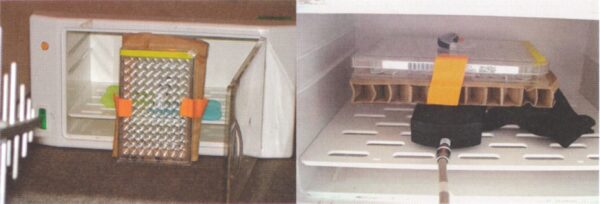 Figure 1: Defined experiment arrangement for measurement of the radiation behavior (distant field on
Figure 1: Defined experiment arrangement for measurement of the radiation behavior (distant field on
the left) and the specific absorption rate (SAR) in the near field (right). The hearing aid is located in the
left picture behind the culture dish, the second hearing aid is located in the right picture under the
culture dish directly on the dosimeter.
The measured SAR values for the hearing aids are very low and lie far below the maximum ratings for mobile phones. But the measurements also resulted in substantial skin and tissue field intensity with maximum 9 V/m which were carried out according to the current recommendations through the Federal Office for Radiation Protection [in German Bundesamt für Strahlenschutz or BfS] without distance from the test object.
Cell Biological Tests and Their Results
For the investigations cultivated connective tissue fibroblasts (Cell Line L-929) which were grown as mass cultures in a special culture medium at 37°C in a C02 [aeration] incubator were used. For the mass cultures the cells for the single experiments were seeded into 96-hole culture plates in pairs per experiment-beginning and after 24 hours placed into another special culture medium which maintained the pH consistency without further CO2 [aeration] in two mini-incubators. The two incubators were separated in two different laboratory rooms approximately 4 meters from each other. The respective active sending hearing aid pairs with the sending frequency of 2.40 GHz or 10.60 MHz were then laid in one incubator over and under the culture plate with the cells (Figure 2, next page) and there the electromagnetic radiation of the hearing aids was paused in different experiment-beginnings of 4, 12 and 24 hours. Then the cells were again incubated for a further 12 hours. The second incubator contained the untreated control cells. With an enzymatic test, which measured the activity of the mitochondrial enzyme, the cell vitality was finally identified.
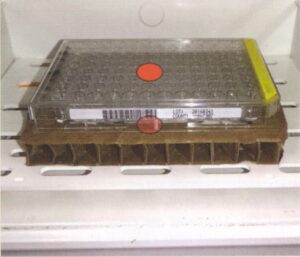 Figure 2: Arrangement of the 96-hole culture
Figure 2: Arrangement of the 96-hole culture
plate in the incubator for the cell exposure. Both red
dots designate the position of both hearing aids.
As shown in Figure 3 for the 24-hour exposure, the electromagnetic radiation of the active hearing aids had a considerable influence on the vitality of the connective tissue fibroblasts. With both hearing aid pairs it came to a statistically significant reduction of the cell vitality in comparison to the untreated control cells (p <0.05; Wilcoxon-Mann-Whitney Test). After 24 hours the reduction amounted to 30.47 ± 7.84% (average ± standard deviation) for the 2.40 GHz hearing aid pair and 20.12 ± 6.24% (average ± standard deviation) for the 10.60 MHz hearing aid pair. The 4- and 12-hour exposures delivered a reduction of about maximum 15% and always the 10.60 MHz hearing aid pair had the lower influence on the cultured cells.
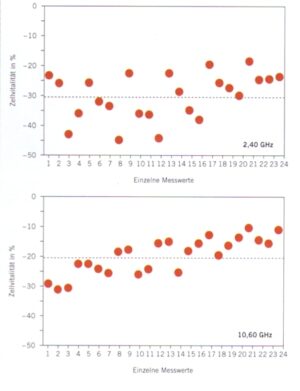
Figure 3: Graphic representation of a single measured value of the cell vitality
after 24-hours exposure of the cells with the electromagnetic radiation of a
hearing aid pair with 2.40 GHz (on top) and 10.60 MHz (below) in comparison
to the untreated controls. In both cases the cell vitality is statistically significantly
reduced compared with the controls (p <0.5; Wilcoxon-Mann-Whitney Test). The
average value of the single measurement is made clear by the sketched line.
Detailed explanations in the text.
Results
The results are surprising, because we had not at all counted on such a cell reaction. On the other hand, hearing aid users are known to us who have banished the devices to the very back corner of a drawer because of headaches and feelings of faintness. The reason for this could be the considerable skin and tissue field strengths with a maximum of 9 V/m. At the moment the investigations with respect to this are still completely in the initial phase and in the future we would like to be working more exactly with – possibly in constructive dialog with – the hearing aid manufacturers, about the cell vitality losses observed by us and thereby not to limit the view only to the SAR values.
Keywords: Hearing aids, electromagnetic radiation, environmental medicine, cell vitality, research

An Exclusive Translated Article for P2P Supporters
From the Monthly Publications of P2P
Published October 2019
From an article in Naturheilkunde Journal, Volume 21, August 2019
Machine Translation by SYSTRAN, Lernout & Hauspie, LogoMedia & Promt
Translation & redaction by: Carolyn L. Winsor, P2P Consulting
© Copyright 2019, Prof. Dr. Dartsch, Germany; Michael Matissek, Austria; Dieter Arntz, Germany
About the Authors:
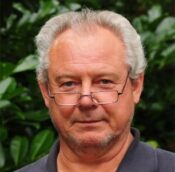
Prof. Dr. rer. nat.
Peter C. Dartsch
Dartsch Scientific GmbH
Institut für zell
biologische Testsystem
Wagenfeld, Germany
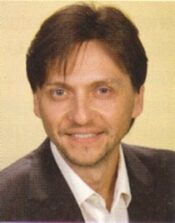 Michael Matissek, MSc
Michael Matissek, MSc
EMF-Biomarker SOLUTIONS
Vienna, Austria
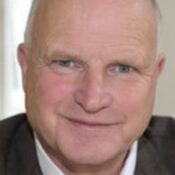 Dieter Arntz
Dieter Arntz
Optician and Hearing
Acoustics Master
Wiesbaden, Germany
Literature:
- Dartsch PC, Dochow T (2017) Cel/ular effects following exposure to wireless DECT base radiation and presentation of a device for their compensation. J Complement Alternat Med Res 3: 1-9.
- Dartsch PC, König F (2017): Neutralization of wireless DECT base radiation by novel resonance devices. Integr Mol Med 4: 1-5.
- Dartsch PC, Dochow T (2019): Cellular effects following exposure to mobile phone radiation and its compensation. Jpn J Med 2:338-343.
- Dartsch PC (2018): Handystrahlung und oxidativer Stress. Naturheilkunde J 20:30-32.
- Georg R (2005): BfS – Bundesamt für Strahlenschutz Vorhaben: Bestimmung der SAR Werte, die während der alltäglichen Nutzung von Handys auftreten. Schlussbericht Projektlaufzeit 2003-2005, Auftraggeber Bundesministerium für Umwelt, Naturschutz und Reaktorsicherheit.
- OKO-Institut: Vorstudie für die Entwicklung von Kriterien für eine verbesserte Verbraucherinformation über Handys, Freiburg, 2003.
- Eder H, Hombach V (2005): Mobiler Messkopf zur standortbezogenen Teilkörper-SAR-Messung an Mobiltelefonen und Basisstationen Landesamt für Arbeitsschutz, Arbeitsmedizin und Sicherheitstechnik (LfASJ, München. Aus [5J Dr. Reinhard Georg: BfS – Bundesamt für Strahlenschutz Vorhaben.
- Das Bayerische Landesamt für Umwelt (LfU) hat das Messgerät zusammen mit der Fachhochschule Augsburg und der Firma Maschek-Elektronik entwickelt. Quelle: LfU-Pressemiffeilung Nr. 04/ Donnerstag, 02. Februar 2006.


